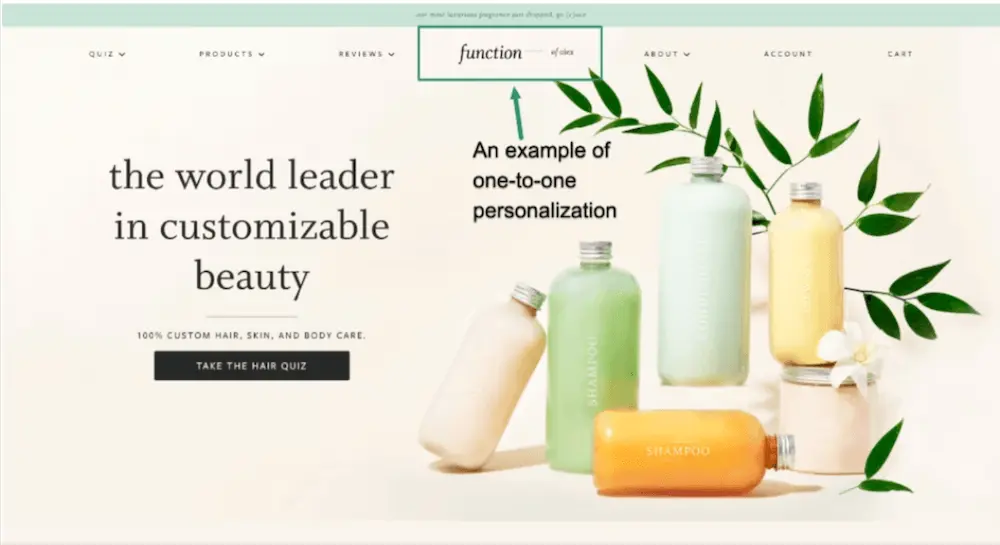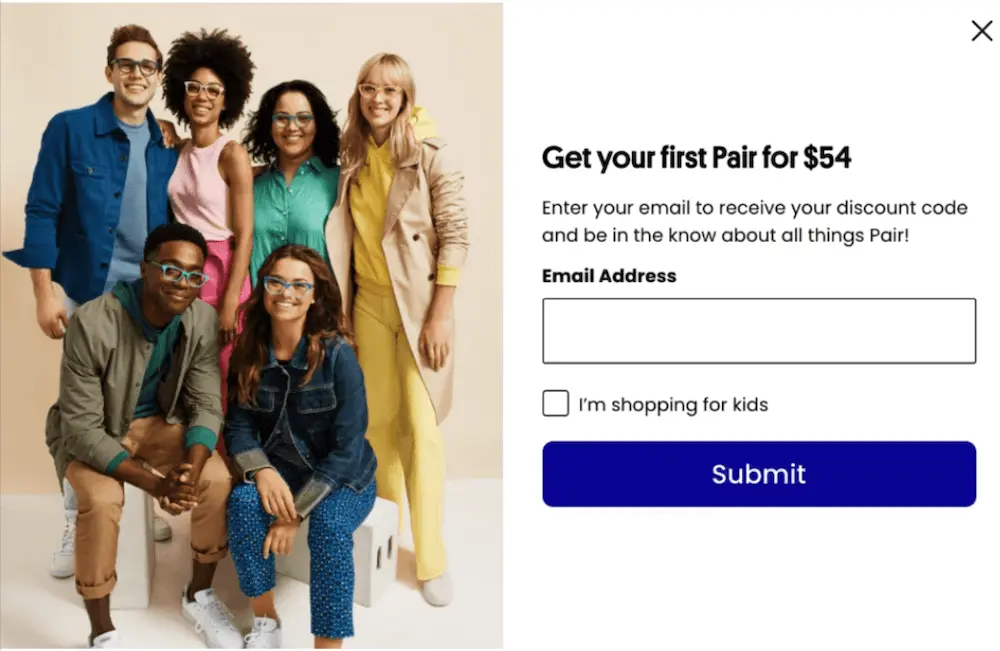Online ad targeting is disappearing, but consumers still want ecommerce personalization. How do you pull it off?

People want privacy online. They also want personalized shopping experiences. What gives?
Consumer data privacy has been in the spotlight now for years. For starters, it’s becoming more difficult to target audiences with paid ads online:
- Google announced they’re planning on turning off third-party cookies entirely by the second half of 2024.
- In late 2023, Apple’s iOS 17 expanded on earlier privacy features by removing link tracking when people are browsing in private mode on Safari or using Apple’s Mail or Messages.
- In 2022, Meta removed detailed targeting from its ad service, which ended up increasing competition and pricing out a lot of small to midsize ecommerce businesses.
But while online shoppers understandably get freaked out when an ad for the shoes they might want follows them on social media, OctaneAI reports that:
- More than 80% of consumers are willing to share data to create a more personalized experience.
- Nearly 65% of consumers are okay with businesses saving their purchase history and preferences in order to receive personalized experiences.
- 80% of consumers are more likely to buy from a brand that gives them personalized experiences.
As it turns out, what people really want is control—over the personal data they share, how it’s used, and how far it extends.
In other words, people still want to interact with brands, but they want to do it after they’ve given those brands permission to use their data. And that’s a huge opportunity for brands to develop more meaningful—and lucrative—relationships with smaller, more manageable audiences.
If you want this for your own brand, you need to learn about—and invest in—better customer data. Keep reading to find out what that means and how to do it right.
What is ecommerce personalization?
Ecommerce personalization��—or website personalization for online retailers—is when you use permission-based data to create different on-site experiences for different shoppers based on their demographics, lifestyle factors, and online behavior.
It’s one thing that can separate an average online shopping experience from an outstanding one.
By adding personalization to your marketing strategy, you make your customers feel like you’re speaking to them directly.
“By adding personalization to your marketing strategy, you make your customers feel like you’re speaking to them directly,” says Gracie Cooper, digital marketing strategist at Groove Commerce.
Put simply, ecommerce website personalization leads to a better customer experience. It gives shoppers on-site customer journeys that feel relevant to them and their specific needs, which helps them find and purchase the products they want, faster—and ultimately drives higher customer engagement and customer loyalty.
How ecommerce personalization saves on marketing spend
Jay Narula, head of business development in North America at Nosto, believes both paid ads and paid social will continue to occupy solid places in the business ecosystem for driving traffic.
But paid channels are expensive, and more traffic alone can’t solve growth marketers’ goals. Even more important: You don’t have as much control there as you do in the channels you own.
“Marketers spend an average of $92 to get a paid traffic visitor to a brand’s website, but only $1 to convert them once they’re there,” Narula points out. “The second we shift some of that investment, it pays off 10- and 20-fold.”
Marketers spend an average of $92 to get a paid traffic visitor to a brand’s website, but only $1 to convert them once they’re there. The second we shift some of that investment, it pays off 10- and 20-fold.
While website personalization used to be “something nice to have,” he says, “now it’s vital. It used to be a vitamin. Now it’s a painkiller.”
“Nurturing and managing the customer relationships you’re building through website personalization means converting them vs. not,” Narula adds. “Often 10x, 30x, 80x for brands that really take the time to address it.”
To see the benefits of personalization—and eventually wean your brand off third-party data—you need to collect high-quality, permission-based data that can tell you more about your customer base than paid channels can.
Data as personalization fuel: building your unified customer profile
A unified customer profile is a collection of defining characteristics on your customers and subscribers. You’ll be able to create this profile with two types of data:
- Zero-party data: information someone gives to you proactively, like their email address, phone number, or birthday
- First-party data: information you compile from observing your owned channels, like engagement with email marketing campaigns, product page browsing behavior, and cart abandonment
Mitch McKay, manager of global marketing partnerships at BigCommerce, prefers this type of data to third-party data because of the consent involved in the process. “I’m willingly giving that to a brand,” he says. “That makes the relationship more enthusiastic, with the potential to be longer-lasting.”
Under this umbrella, the data you collect falls into the following categories:
- Demographic: gender, location, age, income, etc.
- Psychographic: the “why” behind individual customer preferences, such as their likes, dislikes, and values
- Behavioral: past purchases, website browsing history, marketing engagement
- Contextual: devices, channel interactions, seasonal fluctuations
Here are a few of the best ways to collect data for your website personalization efforts:
- Sign-up forms
- Quizzes and surveys
- Post-purchase automation, like review requests and custom review questions
Okay, but what can you actually do with all that data?
Narula says he sees the most success with real-time behavioral data, which is a direct line into why someone is shopping in your online store.
For merchants with lots of product pages, it’s especially helpful to see how long people stay on a given page. This type of data helps a brand distinguish between, say, a serious backpacker and someone who just wants to wear a fleece vest on a weekend.
Contextual data is also relevant, Narula adds. Factors such as the following are all data points that can correlate with the personalized content a website visitor experiences on a landing page:
- The weather the visitor is experiencing
- The state they’re in
- The time of day
- The device they’re on
- Where they’re coming from—like Facebook, Google, or TikTok
Finally, Narula advocates for session-based data. A trigger or on-the-spot quiz can help a brand personalize an approach to, say, a woman who’s in her first trimester versus her third.
Once you’ve decided what kinds of data you’ll collect, you need to learn how to use it within your customer experience platform (like Klaviyo) to launch personalized ecommerce site experiences and measure results.
The main types of website personalization
There are two main ways to personalize your on-site user experience for shoppers:
1:1 ecommerce personalization
1:1 website personalization is less common, but it can feel quite personal if you can pull it off. With data that pertains to one person, like first name, birthday, or anniversary, you can make someone feel like your ecommerce store was made for them.
For example, when you take Function of Beauty’s hair care quiz, the site immediately personalizes to you by adding your name into the header. Instead of “Function of Beauty,” it becomes “Function of Alex.”

1:few ecommerce personalization
Brands more commonly use 1:few personalization, which targets groups or segments of people based on their similarities and shows them personalized recommendations or other relevant content that matches those attributes.
For example, a brand might implement a sign-up form that only offers a discount to shoppers it recognizes as first-time customers who haven’t yet made a purchase.

McKay encountered an example of this type of personalization when shopping for new athleisure. He stayed on a site for 15 minutes, then abandoned his shopping cart.
When the brand followed up, he says, “the user-generated content was brilliant. They had awesome photos of somebody wearing the exact color of the outfit I was looking for. They also included some 5-star reviews—and an intelligent product recommendation for a pair of socks.”
“I very much checked out and ended up buying more than I planned to, because of the relevance of their personalization,” McKay adds.
Next steps: gather the data you need to execute these tactics
While 78% of ecommerce executives understand personalization at scale is a must-have in marketing, 41% say they can’t execute the tactics to get it done.
A customer data platform like Klaviyo CDP solves this problem by centralizing subscriber and customer data within a platform that also sends marketing. When you only need one piece of software to gather data and use that data, the personalization tactics we’ve highlighted here are a lot easier to execute.
Learn more about what a CDP can do for your marketing strategy—and for your bottom line.
Ecommerce personalization FAQs
Why is ecommerce personalization important?
Ecommerce personalization is important for a better customer experience. It gives shoppers on-site journeys that feel relevant to them and their specific customer needs, which helps them find and purchase the products they want, faster.
How can I measure the effectiveness of personalization efforts?
You can measure the effectiveness of personalization efforts by A/B testing them on your website. Start by implementing something simple, like a first name in a clickable banner, and measuring click and conversion rates on that asset. When you have a solid amount of data, try implementing more personalization efforts across your site to increase conversions at the product page level.
What are the challenges of implementing ecommerce personalization?
Ecommerce personalization comes with some challenges if you don’t have the data infrastructure to collect and analyze customer behavior. As an added layer, you’ll also need the right marketing integrations to translate that data into a personalized experience on your website.


